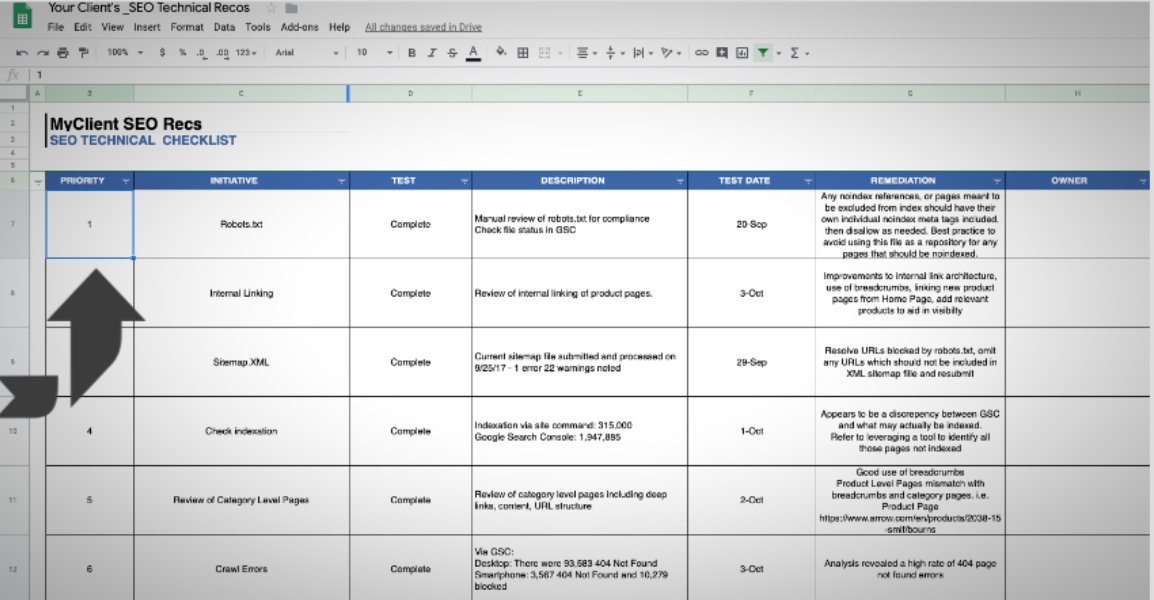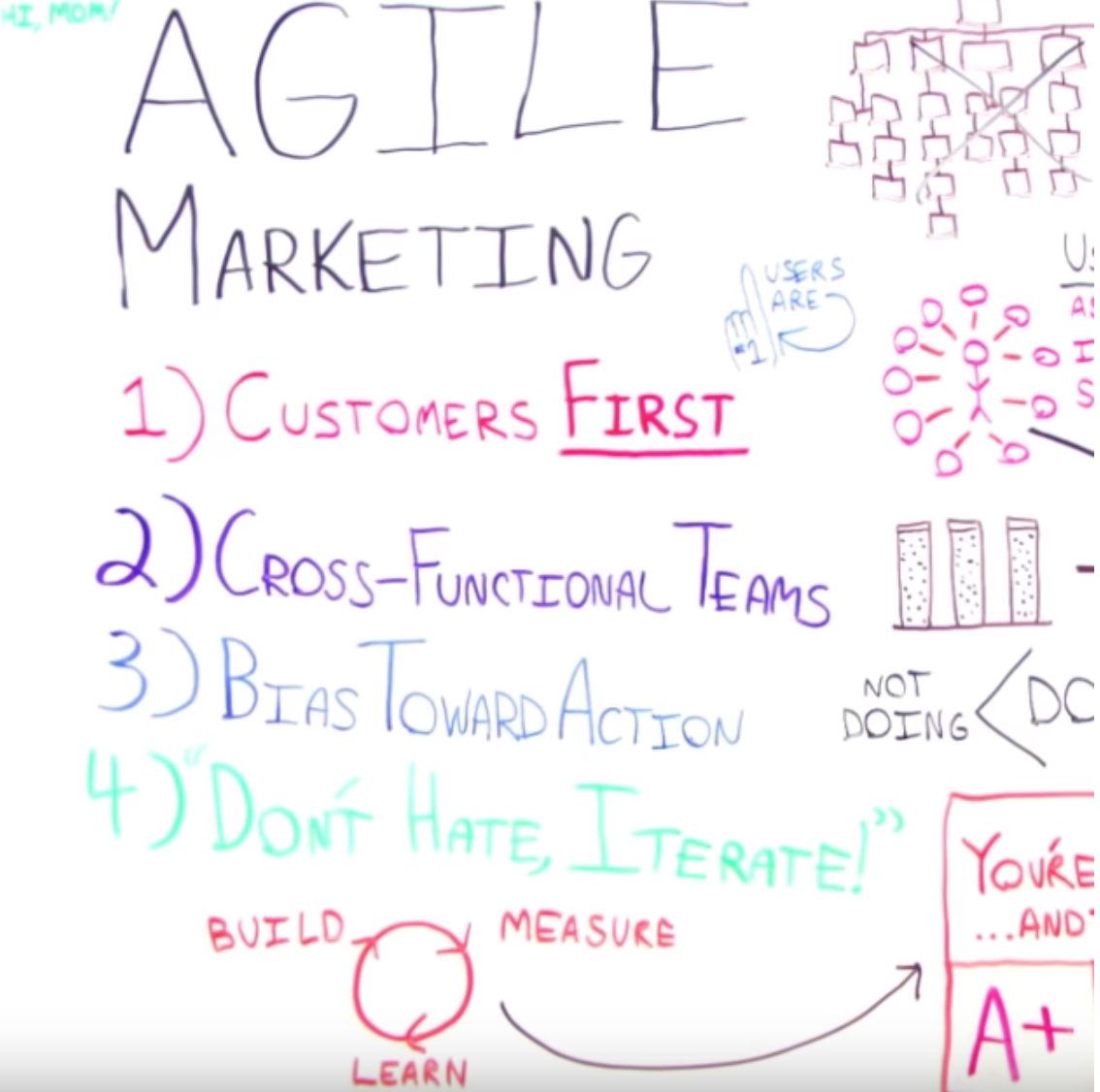
Ask any SEO professional what their #1 challenge is and they’ll likely answer: Resources.
What they really mean though, is getting the right technical resources for implementing their SEO recommendations. Properly implementing your team’s recommendations on a consistent and timely basis will lead to strong organic performance over the long term.
Implementation is like the workout plan a personal trainer creates to help you get in shape. Implement them the right way and you see results. Ignore them, and your gains will suffer.
Sounds simple right?
Not implementing your SEO recommendations is the #1 reason your SEO budget is cut, or your agency’s contract doesn’t get renewed. So how do you find an efficient method for regularly implementing the SEO recommendations that your team is creating?
Step 1: Get Senior Leadership to Buy in

The most effective way to ensure you get your recommendations implemented in a timely manner is through the higher levels of the organization you work within.
One of the most difficult areas to establish any SEO priority is within the IT or development teams. Since SEO is not usually thought of as a revenue source, it’s difficult to assign another department’s resources to make this a priority.
Getting the editorial and development teams to buy into your SEO recommendations will require you to show them the numbers to make it clear how what they can do directly benefits the organization.
Without that level of education, they won’t necessarily see a direct connection between sound SEO best practices applied on a consistent basis and meeting or surpassing key performance goals.
It might be most effective to develop a presentation that illustrates your big picture vision for how your SEO plans will take shape.
I usually recommend sharing and educating the senior level team as often as is reasonable. You’re going to want to check in with them at least monthly and quarterly to show performance over a fixed time period.
Always make sure to set a realistic set of expectations. Avoid promising them SEO is going to increase sales and boost your rankings within 30 days. The more transparent, honest and genuine you can be the better.
Ideally, you should directly correlate your SEO activity to the goals and objectives of the business you’re working with. Some of those goals should be identified and communicated across the organization. As you gain more historical and analytical data, you’ll be able to provide more accurate estimates for increases in conversions and sales, or organic traffic increases to product level pages.
Avoid throwing out numbers without having a reliable source to back them up. Telling your Chief Marketing Officer that you can grow organic search traffic by 45% year over year sounds amazing, but when you achieve 23% (which is still great) you’ll have come up short of what you promised.
Pro Tip: Avoid delving into the weeds and minutiae with your senior leadership team. They very likely do not share the same enthusiasm for SEO as you do, nor do they care about the intricacies of the search algorithm. Succinctly explain your goal, purpose and how you plan on meeting your objectives.
Step 2: Organize your SEO recommendations & prepare for implementation

Once you’ve gotten your senior leadership to buy in – it’s time to get your recommendations organized and prioritized. Many SEO teams like to break down each recommendation into groups, by technical, site-side, and off-site.
Others prefer to prioritize based on the biggest impact to search, and the lowest level of effort. This is my preferred method because it helps keep things organized and makes it easier to estimate where the quick wins are and how long it should take to get them implemented.
Whether you prioritize your recommendations by task, by the type of resources you have available to you or align them according to the business goals that you’ve set – you must organize them in some manner.
Let’s assume you have 45 pages that have duplicate or un-optimized title tags, and of those 45 pages, 30 of those are missing meta descriptions and H1 tags. Then assume there are 100 pages that have 301 redirects and 35 broken internal links. There might also be image alt tags missing, or thin content on many of your product pages.
While these are all ultimately important to strong SEO – it’s likely we won’t get all of these issues remediated within a month’s time.
When considering the above set of recommendations, we might prioritize them in this way:
- Determine which pages require a 301 redirect, or whether the pages should be archived and replaced.
- Correct any internal broken links.
- Optimize titles and meta descriptions, while conducting an update to your keyword research and thinking through user intent.
- Once you’ve conducted keyword research and optimized your titles and meta descriptions, move to updating the H1 tags and improve that thin on-page content.
- Finally, conduct an image audit to determine which images require compression and updated image Alt tags.
Depending on the number of people that can support these initiatives, you might need to spread these recommendations out over the course of 8-12 weeks’ time.
Pro Tip: Avoid trying to over promise and under deliver. Keyword research and crafting unique titles or meta descriptions takes time and effort. Ideally, these tasks should be coordinated with other digital marketing channels to keep consistency across your products and services pages.
Step 3: Adopt an Agile Approach to Implementing your SEO Activities & Recommendations

Now that you have all your recs prioritized and ready to be implemented – you need to put on your project management hat.
Teknicks CEO, Nick Chasinov, believes that Agile Internet Marketing is based on five fundamentals:
- Measure value from the perspective of the client/consumer
- Minimize uncertainty to minimize waste
- Work incrementally to maximize flexibility and responsiveness
- Strive for ongoing, transparent collaboration
- Continuously work toward improvement
Most people associate Agile with software development and even newer technologies such as Amazon Alexa skill development, but the simple fact is working within an Agile framework will allow you to adapt and make changes to any project – SEO, software, or your kitchen renovation – without waiting weeks or months like you would in a waterfall type method.
Working within your developer’s sprint cycle can help keep you in check with what should be done now, and what should be in the backlog.
Establish an SEO calendar over the course of the next 3-6 months as you think through the many projects you might have in front of you. With each project be sure to consider the tests you have with the CRO (conversion rate optimization) team and think about how you can plan for those adjustments.
Pro Tip: No matter what method you use, pick one and tweak it until you develop your own method for planning marketing activities.
Each phase of Agile marketing builds on the previous one and can easily be built into your overall planning and strategy.
DISCOVERY – You need to establish a discovery call with your team or client to understand the goals and objectives of the business.
ANALYZE – Review all analytics and any data that helps you learn more about the site you’re about to optimize.
STRATEGIZE – Once you’ve established goals and accumulated all the necessary data you can pull it all together into a concise SEO strategy.
EXECUTE – After you’ve shared your strategy and gotten senior leadership to buy in you can begin to execute the plan by rolling into an ongoing recommendation cycle. This should also include the implementation of your prioritized SEO recommendations.
MEASURE – Through your analytics platform and against your KPIs, you develop those areas you’ve just optimized by measuring their performance over time.
REPORT – Reporting on your performance at regular intervals will help provide your boss, client, and team understanding that what you’re doing has an impact.
ADJUST – You may find that a particular page isn’t getting the visibility or engagement you’d hope for. Here’s where you make those adjustments, fine-tune it and roll back into the cycle.
Here’s how REI explains their method for using Agile in their SEO work:
FINAL THOUGHTS
If you’ve been practicing as an in-house SEO or act as a digital marketing lead overseeing an SEO program, then you know first-hand that there are dozens of challenges you face each day. Conquering the challenges of implementation should not be one of those. Using these tips to identify pain points and streamline your process can make a world of difference for your next SEO project.